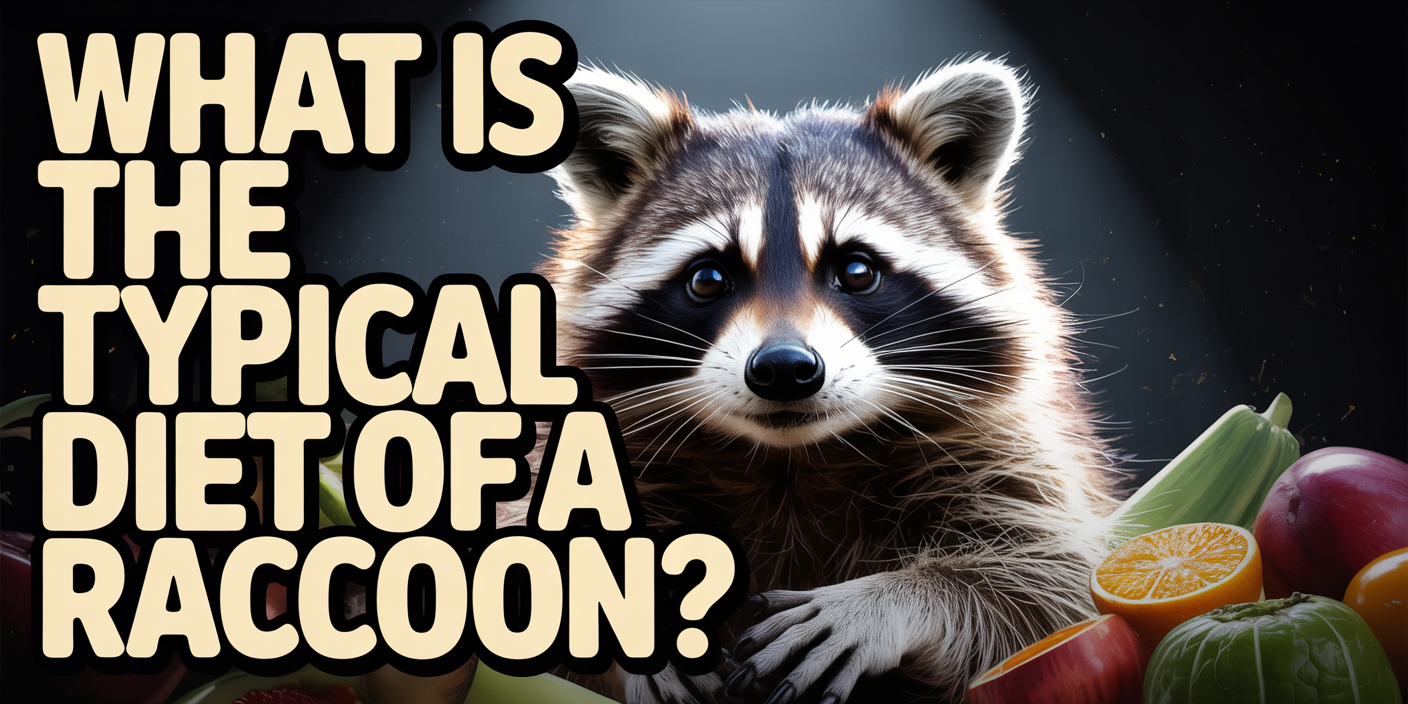“Raccoons are opportunistic omnivores that eat fruits, insects, small animals, and even garbage. In urban areas like Palm Bay, they often raid pet food, trash, and gardens, making them a frequent nuisance.”
Raccoons are curious, intelligent, and incredibly resourceful when it comes to finding food. Known for their distinctive black mask and nimble paws, these nocturnal mammals thrive in both wild and urban environments. In places like Palm Bay, FL, their adaptability is especially evident as they easily shift their diet based on the surroundings, season, and food availability.
Whether rummaging through a backyard trash bin or foraging in the desert outskirts, raccoons rarely pass up a meal. Understanding what raccoons typically eat is key to preventing unwanted visits around your property.
Homeowners in the Valley often deal with overturned garbage cans, scattered pet food, or even disrupted gardens, all signs that a raccoon might be looking for its next snack. At AAAC Wildlife Removal, we specialize in helping Palm Bay residents safely remove raccoons and keep their homes protected. Knowing their dietary habits is one of the first steps in raccoon-proofing your space.
Learn more: What is the natural habitat of a raccoon?
What Do Raccoons Typically Eat?
Raccoons are incredibly adaptable omnivores with a taste for just about anything that’s easy to catch or steal. Their eating habits are influenced by seasonal availability, local ecosystems, and the presence of humans.
In Palm Bay, where natural food sources mix with suburban living, raccoons enjoy a surprisingly broad menu. This flexibility helps them survive in both the wild and city neighborhoods, but it also brings them into conflict with homeowners.
Here’s a more detailed look at what raccoons typically eat:
- Fruits and berries – Raccoons are drawn to sugary, water-rich fruits like figs, grapes, cantaloupe, and prickly pear cactus fruits. These are not only tasty but also hydrating, especially during hot Palm Bay summers. When native desert plants bear fruit, raccoons are often seen foraging around gardens and fruit trees.
- Nuts and seeds – In wooded or suburban areas with oak and pecan trees, raccoons collect fallen nuts and seeds for a high-fat, energy-rich snack. This part of their diet becomes especially important in the fall, when they’re trying to fatten up for colder months or increased nighttime activity.
- Insects – Beetles, grubs, caterpillars, and other insects are a protein-packed staple in a raccoon’s diet. These critters are easy to find under rocks, inside rotten logs, or in damp soil. In Palm Bay, raccoons may root through mulch or garden beds to uncover hidden insect meals.
- Bird eggs and nestlings – Raccoons are skilled climbers and will raid nests if given the opportunity. Eggs are easy to crack with their paws and provide valuable protein. Backyard bird feeders and low tree nests can attract more than just songbirds, raccoons may be watching too.
- Small animals – These include frogs, lizards, rodents, and even small snakes. Raccoons will pounce, trap, or bite their prey when the opportunity arises. Their hunting is most active at night, and in desert-adjacent areas of Palm Bay, small ground-dwelling animals become easy targets.
- Fish and aquatic life – Near ponds, drainage canals, or backyard water features, raccoons have been known to scoop up minnows, crayfish, and tadpoles. Their sharp claws and keen night vision make them surprisingly good at grabbing fast-moving aquatic prey.
- Human food waste – This is where urban problems really start. Raccoons will dig through trash cans, lick BBQ grills, swipe pet food from bowls, and even open compost bins if they aren’t sealed tight. Once they learn where to find easy calories, they’ll keep coming back.
This broad and ever-changing diet is exactly why raccoons thrive in cities like Palm Bay. It also explains why they often show up where they’re not welcome, especially if there’s a snack involved.
What Do Raccoons Eat in Urban Areas Like Palm Bay?
Living in a metro like Palm Bay gives raccoons access to a buffet of easy meals. As intelligent problem-solvers, they quickly learn how to navigate neighborhoods, backyards, and even apartment complexes in search of food.
Their city diet often looks quite different from what they’d eat in the wild, and that’s where most human-wildlife conflicts begin. Here are some of the top food sources raccoons target in urban settings:
- Human Garbage and Leftovers
Unsecured trash cans are like goldmines to raccoons. Leftover food, greasy packaging, and food scraps are irresistible and easy to access if lids are loose or bins are tipped over. They also target fast-food bags, picnic sites, and construction dumpsters. - Pet Food and Water Bowls
Leaving pet food outside, especially overnight, is a major attraction. Raccoons will happily eat dog kibble, cat food, or spilled bird seed, and they’ll remember the location for return visits. Water bowls in hot climates like Palm Bay are also a draw, especially during dry seasons. - Vegetable Gardens and Fruit Trees
Homegrown tomatoes, squash, berries, and citrus fruits are a treat for hungry raccoons. Garden raids are especially common in neighborhoods with backyard plots or low-hanging fruit trees. They’ll break fencing or dig through mulch if necessary. - Compost Bins and Organic Waste
Even eco-friendly compost bins can be a feeding station if not properly sealed. Raccoons sniff out banana peels, eggshells, and vegetable scraps, sometimes tipping the bins and scattering contents all over the yard. - Pools, Ponds, and Water Features
Any backyard water source, including koi ponds or bird baths, can become a raccoon’s watering hole. They may also hunt for fish or amphibians if present, leaving behind muddy footprints and tipped pots.
Palm Bay homeowners need to be especially vigilant about these food sources, as raccoons in the Valley have grown increasingly accustomed to living off what humans unintentionally provide. Keeping these areas secure is a major step toward reducing unwanted visits.
Seasonal Changes in a Raccoon’s Diet
Raccoons in Palm Bay adjust their eating habits throughout the year based on what’s available. These seasonal shifts help them survive changing food supplies and prepare for periods of low activity or limited resources. Understanding how their diet changes by season can help you anticipate and prevent potential encounters around your home.
Spring and Summer Diet
During the warmer months, raccoons become more active and prioritize foods rich in protein and hydration. Insects, frogs, lizards, and bird eggs are commonly hunted in backyards, greenbelts, and near water sources.
They also forage for ripe fruits, vegetables, and berries, especially from garden beds and low-hanging trees. The abundance of food and longer nights make these seasons ideal for raccoon foraging, often increasing sightings in suburban neighborhoods.
Fall and Winter Diet
As fall approaches, raccoons begin targeting high-calorie foods like acorns, seeds, and fatty leftovers to build energy reserves. While Palm Bay winters are milder than other regions, food sources still become less predictable. Raccoons respond by scavenging more aggressively in urban areas, relying on trash, pet food, and compost to meet their needs. Their movements may become slightly more cautious, but they’ll still venture out nightly if an easy meal is available.
These seasonal behaviors not only explain their shifting diets but also highlight the importance of year-round prevention to keep raccoons away from your property.
Why Understanding Raccoon Diet Helps with Prevention?
Knowing what raccoons like to eat is more than just trivia, it’s one of the most effective ways to keep them out of your yard. Once raccoons find a reliable food source, they’ll keep coming back, often bringing friends. That’s why understanding their diet is the first step to stopping repeat visits before they become a bigger problem.
If you’re leaving out pet food, growing fruits or veggies, or have unsecured trash bins, you’re basically setting out a welcome mat. Raccoons are smart and have excellent memories, which means even one meal can turn into regular appearances.
By identifying and eliminating these temptations, you make your property much less appealing to foraging raccoons. This proactive approach can help prevent damage, noise disturbances, and potential health risks that come with raccoon activity.
How AAAC Wildlife Removal Handles Food-Seeking Raccoons in Palm Bay?
Raccoons that rely on your property for food can quickly become regular, destructive visitors. At AAAC Wildlife Removal, we offer proven, humane solutions to stop the cycle and keep your home raccoon-free. Our services are tailored specifically for Palm Bay homes, where desert wildlife behavior meets suburban living.
Step 1: Property Inspection and Food Source Assessment
We begin with a thorough inspection of your home and yard to identify what’s attracting raccoons. This includes checking trash bins, pet feeding areas, compost piles, gardens, and potential water sources. Once the attractants are pinpointed, we create a game plan to remove or secure them.
Step 2: Humane Trapping and Removal
If raccoons are already present, we use safe and humane trapping methods to remove them without harm. Our traps are placed strategically based on raccoon activity and feeding patterns. We follow all state regulations to ensure ethical removal and relocation when permitted.
Step 3: Exclusion and Prevention Strategies
After removal, we focus on keeping raccoons out for good. This includes sealing entry points, securing trash bins, offering pet food storage tips, and recommending structural repairs if needed. Our goal is not just removal, it’s long-term prevention backed by local experience in Palm Bay’s unique environment.
With AAAC Wildlife Removal, you’re getting more than a quick fix. You’re getting a full-service team that understands raccoon behavior and works with you to stop the problem where it starts: the food.
Why Raccoons Keep Coming Back?
Raccoons have incredibly flexible diets that allow them to thrive just about anywhere, from the desert edges of Palm Bay to the heart of suburban neighborhoods. Their willingness to eat almost anything; fruits, bugs, bird eggs, trash, and pet food, makes them successful survivors but also frequent troublemakers around homes.
Once they find a reliable food source, they rarely forget it. By understanding what attracts raccoons, you can take smart steps to discourage them from turning your yard into their personal pantry.
Eliminating access to food, water, and shelter goes a long way in keeping these clever foragers away. And when things get out of hand, AAAC Wildlife Removal is here to help restore peace to your property quickly, safely, and humanely.
Protect Your Palm Bay Home from Raccoon Trouble Today!
If raccoons are raiding your trash, prowling around your garden, or making a mess of your pet’s feeding area, it’s time to take action. AAAC Wildlife Removal offers expert raccoon control services right here in Palm Bay, FL. Our trained specialists know exactly how to track, trap, and prevent these clever critters from returning to your home.
Don’t let food-hunting raccoons take over your property. Call AAAC Wildlife Removal today for fast, humane removal and long-term prevention solutions that protect your home, your pets, and your peace of mind. Your raccoon-free home starts with one call!




